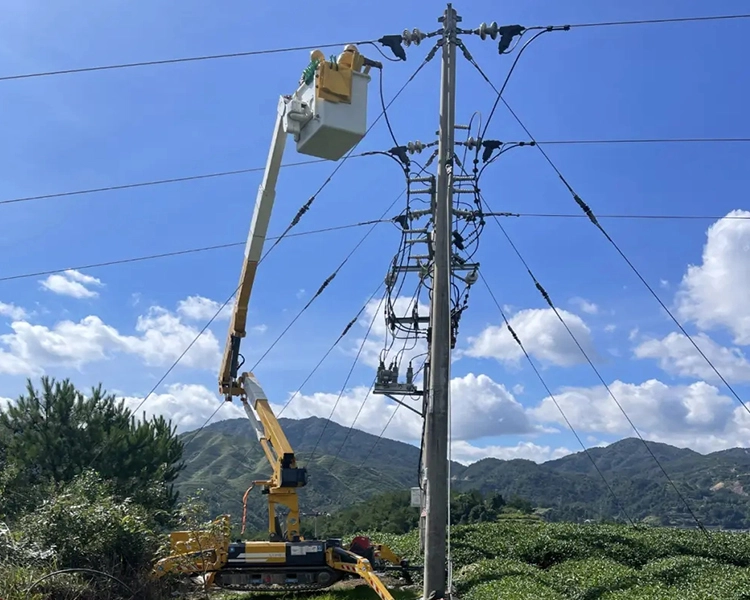en
+
The automatic reclosing device is an important device used to restore power supply in the power system. Its main function is to automatically cut off the faulty line after a short circuit or other fault occurs, and try to reclose the circuit within a set time to restore normal power supply. The status of the automatic reclosing device can be divided into multiple categories, which reflect the operation of the device under different working conditions. The following will discuss the various states and characteristics of the automatic reclosing device in detail.
I. Working status
1. Standby state
-Under normal operation, the automatic reclosing device is in standby state. At this time, the equipment monitors the operating status of the power system and keeps monitoring the line, but does not perform any operation.
2. Closing state
-When the power line is in normal state, the switch of the automatic reclosing device is in the closing state, allowing the current to pass normally.
3. Tripping state
-When a fault occurs (such as short circuit, overload, etc.), the protection device will be triggered, the automatic reclosing device will trip, cut off the faulty line, and avoid damage to other lines and equipment.
4. Reclosing state
- After a fault occurs, the automatic reclosing device will try to reclose according to the set time delay. If the fault is temporary (for example, a momentary short circuit caused by animal contact), the reclosing will succeed and the line will return to normal.
II. Fault state
1. Continuous fault state
- If the reclosing device fails to reclose after a fault occurs on the line, the device enters the continuous fault state. At this time, the reclosing device will cut off the power supply to avoid damage to the equipment and send a fault message to the control center.
2. Locked state
- When the line fails again after reclosing, the device will lock the state to avoid frequent switching. This is usually to protect the equipment and prevent electrical shock caused by frequent closing in the fault situation.
III. Recovery state
1. Fault cleared state
- Once the fault is cleared, the reclosing device can detect that the line has returned to normal. At this time, the device will be ready for the next closing operation.
2. Power supply recovery state
- After confirming that the fault has been cleared, the automatic reclosing device can close again to restore power to the line. This is an important sign that the equipment has returned to normal working condition.
IV. Monitoring status
1. Monitoring status
- The automatic reclosing device is equipped with a variety of monitoring functions, which can monitor the current, voltage, frequency and other parameters of the line in real time. When an abnormality is detected, the device will trigger an alarm and enter the tripping state.
2. Fault recording status
- In the event of a fault, the automatic reclosing device will record relevant data, including fault time, fault type, number of trips, etc. This information is of great significance for subsequent fault analysis and system optimization.
V. Debugging and maintenance status
1. Debugging status
- After the equipment is installed or maintained, the automatic reclosing device needs to be debugged to ensure that its functions are normal. At this time, the device is in the debugging state, and the engineer will conduct a series of tests to verify the device's response time, closing accuracy, etc.
2. Maintenance status
- Regular maintenance is an important measure to ensure the normal operation of the automatic reclosing device. During maintenance, the device may be temporarily shut down and put into maintenance status to ensure the safety of maintenance personnel.
VI. Factors affecting state changes
The state of the automatic reclosing device is not only affected by the performance of the device itself, but also closely related to the external environment and the overall operation of the power system. For example:
1. Environmental factors
- Weather changes (such as thunderstorms, ice and snow, etc.) will directly affect the safety of power lines, thereby affecting the working state of the automatic reclosing device.
2. Equipment aging
- Over time, the performance of the equipment may decline, which may cause the device to fail to respond in time when a fault occurs, affecting the success rate of reclosing.
3. System load
- Under high-load operating conditions, the probability of faults increases, which puts higher requirements on the reliability of the automatic reclosing device.
VII. Future development trends
With the development of science and technology, the technology of automatic reclosing devices is also constantly improving. Future development trends mainly include:
1. Intelligence
- The use of advanced artificial intelligence and machine learning technologies enables the automatic reclosing device to have stronger fault judgment and processing capabilities, and can optimize the reclosing strategy based on historical data.
2. Integration
- The integration of automatic reclosing devices with other power equipment will be closer, and the overall efficiency and stability of the power system will be improved through comprehensive monitoring and control.
3. Remote monitoring
- Through Internet technology, remote monitoring and management of automatic reclosing devices can be realized to improve fault response speed and maintenance efficiency.




